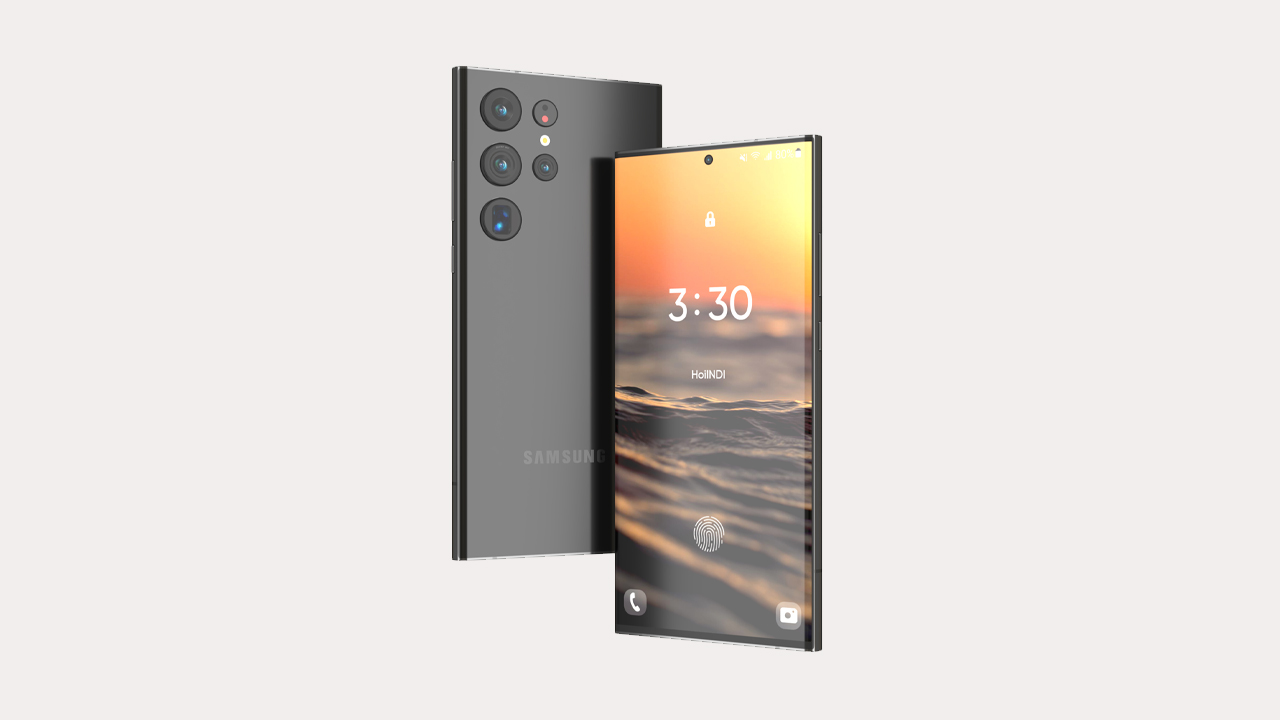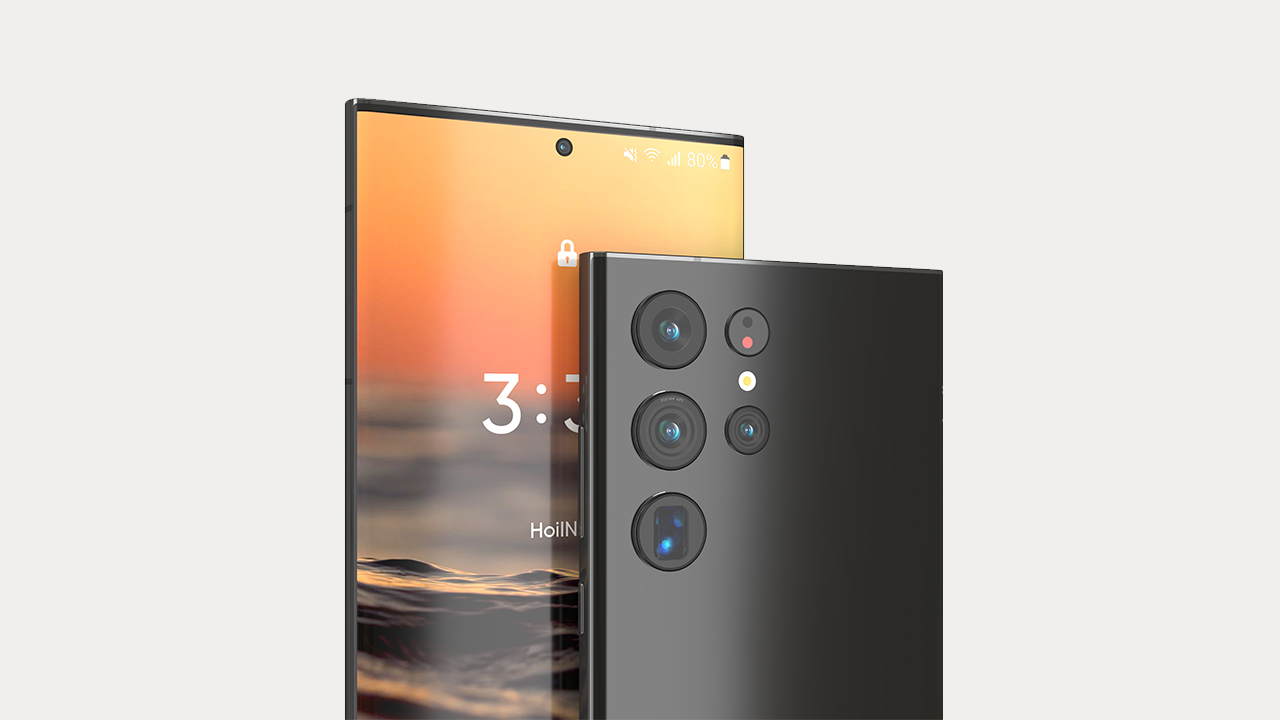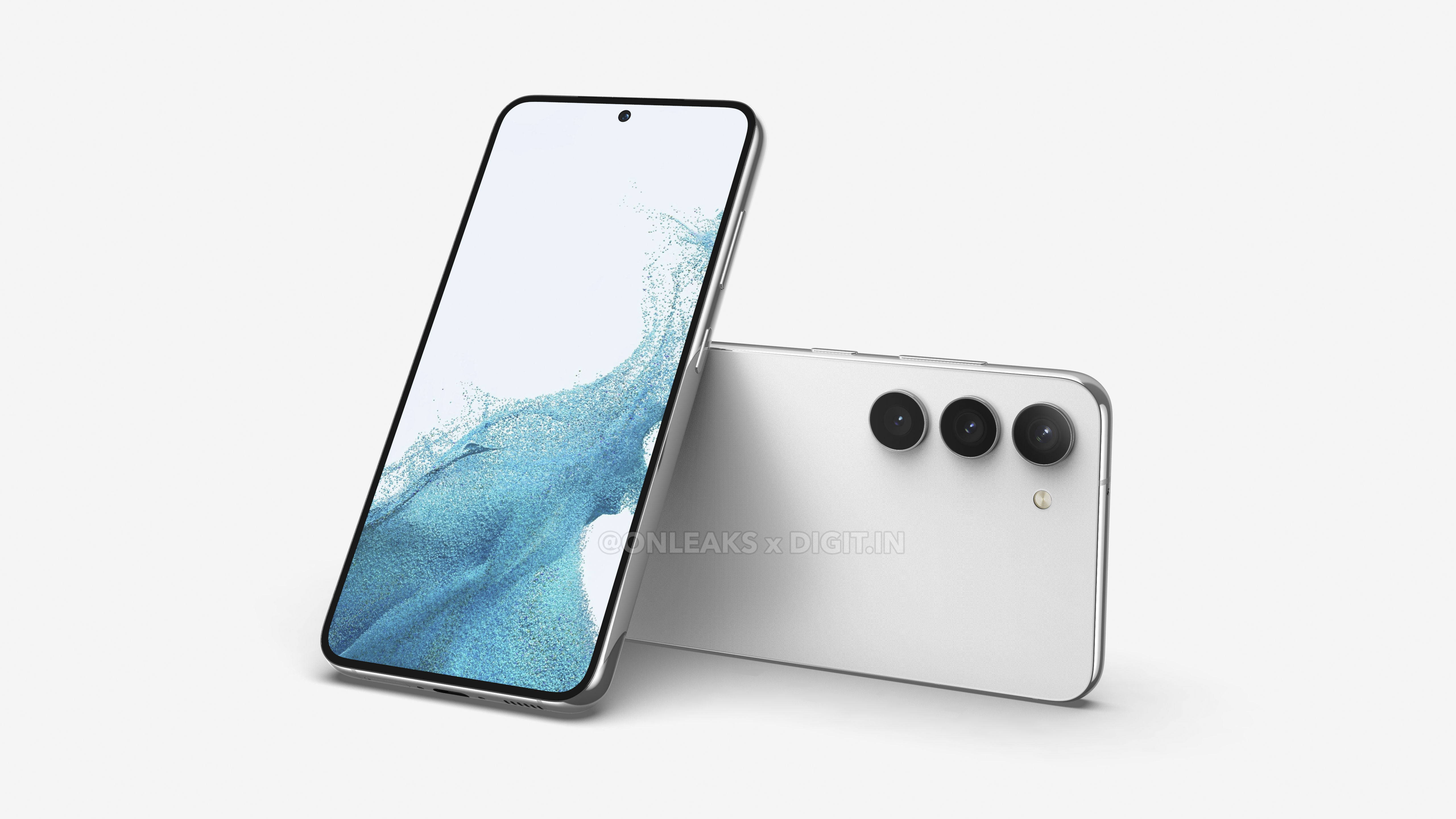Samsung Galaxy S23 series
Samsung Galaxy S23 and S23+ arrive with new design, bigger batteries
The Samsung Galaxy S23 and Galaxy S23+ are the latest refinement of long-running the S-series formula. Yes, refinement – Samsung improved the major hardware and software features, but there are no radical changes.
Samsung Galaxy S23




The biggest upgrade for this generation is that all S23 phones sold around the world will exclusively use a bespoke Qualcomm chipset, officially known as the Snapdragon 8 Gen 2 for Galaxy (you can hear the cheers coming from Europe). This features higher clock speeds compared to the other 8 Gen 2 chipsets out there. The phones come with several storage configurations, but RAM is fixed at 8GB (as it was last year and the year before that).
The cameras have been revamped too. It’s not as big an upgrade as the Ultra got, but there are some impactful changes under the hood. For example, the Camera RAW app can now shoot in 50MP resolution (up from 12MP on the S22 series), making full use of the main camera.
That camera still has a 50MP sensor, which (thanks to the new chipset) can record 8K video at 30fps (up from 24fps last year). The 12MP ultra wide camera (120° FoV) and the 3x 10MP telephoto camera remain largely the same.

One upgrade is the move to a 12MP selfie camera, which is shared across the three models. Its video recording capabilities now include support for Super HDR at 60fps.
Like the cameras, the displays have been enhanced but still follow the same overall formula as last year. This means flat Dynamic AMOLED 2X panels with FHD+ resolution and 48-120Hz refresh rate (240Hz touch sampling rate in Game Mode).
The smaller Galaxy S23 has a 6.1” display, the Galaxy S23+ has a 6.6” screen. The both of them have centered punch holes for the selfie camera and have a fingerprint reader tucked underneath.
New additions this year are Vision Booster, which adjusts the colors and contrast to match the ambient lighting conditions, and an Enhanced Comfort feature, which does the same in the evening to to reduce eye strain.
The batteries on the S23 and S23+ are 200mAh larger than their predecessors, bringing the totals to 3,900mAh and 4,700mAh, respectively. Wired charging for the S23 is rated at 25W (30 minutes to 50%), for the S23+ at 45W (30 minutes to 65%). Wireless charging and wireless power sharing is still supported, of course.
Samsung Galaxy S23+




The new chipset brings improved connectivity. This includes support for the new 6GHz Wi-Fi 6E as well as Bluetooth 5.3 (up from the original Wi-Fi 6 and BT 5.2).
For this generation the Galaxy S23 and S23+ have adopted the styling of the Ultra by removing the Contour Cut camera housing and leaving just the three camera lenses. The dust and water resistance rating is IP68 (1.5m of water for 30 minutes like last year). The phones are the first to adopt the new Gorilla Glass Victus 2, which is more durable and includes recycled materials. Some of the plastics are recycled as well, as is 100% of the paper used for the packaging.

All four models will be available in these four colors: Cream, Green, Lavender and the traditional Phantom Black.

Samsung is already accepting pre-orders for the Galaxy S22 and S23+, sales will start in a couple of weeks. We will have more detailed pricing shortly, but here are the starting prices: the S23 (8/128GB) is $800/€950/₹80,000, the S23+ (8/256GB) is $1,000/€1,210.
If you want to know more about the Galaxy S23 and Galaxy S23+ we suggest you check out our Galaxy S23 series hands-on where you can find live photos and first-hand impressions.
https://youtu.be/p3iBr5fDAX8
Samsung Galaxy S23 Ultra is official with 200MP camera and bespoke Snapdragon 8 Gen 2
The Samsung Galaxy S23 Ultra is finally official and it may be the least obvious upgrade in the history of Samsung flagship phones. That's to say that it looks almost identical to the Galaxy S22 Ultra but it actually isn't.
The most obvious difference is the color - the Galaxy S23 Ultra ships in three new colors - Green, Lavender, and Cream join the Phantom Black of old.

So what's new? Inside the Galaxy S23 Ultra ticks a custom-tuned Snapdragon 8 Gen 2 Mobile Platform for Galaxy. Samsung went with Qualcomm's latest SoC for its entire Galaxy S23 lineup and you won't get an Exynos-powered S23 in any market this time.
The Snapdragon 8 Gen 2 for the Galaxy S23 Ultra has a Cortex-X3 core, running at up to 3.36GHz, up from the usual maximum 3.2GHz on the SD 8 Gen 2. The Adreno 740 GPU is reportedly clocked at 719MHz, instead of 680MHz.
Samsung Galaxy S23 Ultra in Phantom Black, Cream, Green, and Lavender




The other big improvement is the main camera. It's Samsung's 200MP ISOCELL HP2 sensor and it's adaptive. It can combine 16 pixels into one for a 12MP final resolution with 2.4µm individually-sized pixels. Or it can combine its pixels 4-to-1 and give you a 50MP shot with more detail to work with.
Starting with the Galaxy S23 series, Samsung is moving its Expert RAW app as a mode inside the native camera app and giving you the option to shoot RAW images with the benefits of multi-frame processing - higher levels of detail, HDR, and better noise reduction - at up to 50MP.

The Galaxy S23 Ultra also brings a new Astro Hyperlapse video mode. The new main camera has improved video stabilization over the old 108MP main camera thanks to Adaptive VDIS, which analyzes and subdivides movements and recognizes lighting conditions, and the new sensor's 2x wider OIS angle - compensating for around 3°, compared to the 1.5° of the S22 Ultra.
The new 200MP camera, Astrophoto feature


There's a new front-facing camera, which is shared with the Galaxy S23 series - a 12MP f/2.2 unit with autofocus. The other three cameras on the back of the Galaxy S23 Ultra are largely the same as those on the Galaxy S22 Ultra - there's a 10MP 10x f/4.9 periscope camera, a 10MP 3x f/2.4 shorter telephoto unit, and a 12MP f/2.2 ultrawide camera with autofocus.
The screen is another thing that's largely untouched from the previous Ultra but it was already a masterpiece. The panel is a 6.8-inch Dynamic AMOLED 2x of 1440x3088px resolution, and 1,750 nits of brightness. The display can adaptively refresh from 1Hz to 120Hz.
What has changed is the addition of a smarter Vision Booster that can adjust the color tone and contrast of the display at three different lighting conditions. The other meaningful upgrade has to do with protection - the Galaxy S23 Ultra premieres the new Gorilla Glass Victus 2 on both the front and back.

The other key spec that is carried over from the Galaxy S22 Ultra is the battery. It's the same 5,000mAh capacity with the same 45W maximum charging speed. Samsung claims the S23 Ultra will reach 65% charge after 30 minutes on the charger.

You can buy the Galaxy S23 Ultra from today in four colors - Phantom Black, Green, Cream, and Lavender - and in up to four configurations that start from 256GB this year - 8/256GB, 12/256GB, 12/512GB, and the range-topping 12/1TB.
The base Galaxy S23 Ultra starts from €1,400 in Europe, $1,200 in the States, and ₹115,000 in India.
Livestream dia 01-02-2023 às 18h:
https://youtu.be/gUM2wYKdxDA
Samsung Galaxy S23 and S23+ arrive with new design, bigger batteries
The Samsung Galaxy S23 and Galaxy S23+ are the latest refinement of long-running the S-series formula. Yes, refinement – Samsung improved the major hardware and software features, but there are no radical changes.
Samsung Galaxy S23




The biggest upgrade for this generation is that all S23 phones sold around the world will exclusively use a bespoke Qualcomm chipset, officially known as the Snapdragon 8 Gen 2 for Galaxy (you can hear the cheers coming from Europe). This features higher clock speeds compared to the other 8 Gen 2 chipsets out there. The phones come with several storage configurations, but RAM is fixed at 8GB (as it was last year and the year before that).
The cameras have been revamped too. It’s not as big an upgrade as the Ultra got, but there are some impactful changes under the hood. For example, the Camera RAW app can now shoot in 50MP resolution (up from 12MP on the S22 series), making full use of the main camera.
That camera still has a 50MP sensor, which (thanks to the new chipset) can record 8K video at 30fps (up from 24fps last year). The 12MP ultra wide camera (120° FoV) and the 3x 10MP telephoto camera remain largely the same.

One upgrade is the move to a 12MP selfie camera, which is shared across the three models. Its video recording capabilities now include support for Super HDR at 60fps.
Like the cameras, the displays have been enhanced but still follow the same overall formula as last year. This means flat Dynamic AMOLED 2X panels with FHD+ resolution and 48-120Hz refresh rate (240Hz touch sampling rate in Game Mode).
The smaller Galaxy S23 has a 6.1” display, the Galaxy S23+ has a 6.6” screen. The both of them have centered punch holes for the selfie camera and have a fingerprint reader tucked underneath.
New additions this year are Vision Booster, which adjusts the colors and contrast to match the ambient lighting conditions, and an Enhanced Comfort feature, which does the same in the evening to to reduce eye strain.
The batteries on the S23 and S23+ are 200mAh larger than their predecessors, bringing the totals to 3,900mAh and 4,700mAh, respectively. Wired charging for the S23 is rated at 25W (30 minutes to 50%), for the S23+ at 45W (30 minutes to 65%). Wireless charging and wireless power sharing is still supported, of course.
Samsung Galaxy S23+




The new chipset brings improved connectivity. This includes support for the new 6GHz Wi-Fi 6E as well as Bluetooth 5.3 (up from the original Wi-Fi 6 and BT 5.2).
For this generation the Galaxy S23 and S23+ have adopted the styling of the Ultra by removing the Contour Cut camera housing and leaving just the three camera lenses. The dust and water resistance rating is IP68 (1.5m of water for 30 minutes like last year). The phones are the first to adopt the new Gorilla Glass Victus 2, which is more durable and includes recycled materials. Some of the plastics are recycled as well, as is 100% of the paper used for the packaging.

All four models will be available in these four colors: Cream, Green, Lavender and the traditional Phantom Black.

Samsung is already accepting pre-orders for the Galaxy S22 and S23+, sales will start in a couple of weeks. We will have more detailed pricing shortly, but here are the starting prices: the S23 (8/128GB) is $800/€950/₹80,000, the S23+ (8/256GB) is $1,000/€1,210.
If you want to know more about the Galaxy S23 and Galaxy S23+ we suggest you check out our Galaxy S23 series hands-on where you can find live photos and first-hand impressions.
https://youtu.be/p3iBr5fDAX8
Samsung Galaxy S23 Ultra is official with 200MP camera and bespoke Snapdragon 8 Gen 2
The Samsung Galaxy S23 Ultra is finally official and it may be the least obvious upgrade in the history of Samsung flagship phones. That's to say that it looks almost identical to the Galaxy S22 Ultra but it actually isn't.
The most obvious difference is the color - the Galaxy S23 Ultra ships in three new colors - Green, Lavender, and Cream join the Phantom Black of old.

So what's new? Inside the Galaxy S23 Ultra ticks a custom-tuned Snapdragon 8 Gen 2 Mobile Platform for Galaxy. Samsung went with Qualcomm's latest SoC for its entire Galaxy S23 lineup and you won't get an Exynos-powered S23 in any market this time.
The Snapdragon 8 Gen 2 for the Galaxy S23 Ultra has a Cortex-X3 core, running at up to 3.36GHz, up from the usual maximum 3.2GHz on the SD 8 Gen 2. The Adreno 740 GPU is reportedly clocked at 719MHz, instead of 680MHz.
Samsung Galaxy S23 Ultra in Phantom Black, Cream, Green, and Lavender




The other big improvement is the main camera. It's Samsung's 200MP ISOCELL HP2 sensor and it's adaptive. It can combine 16 pixels into one for a 12MP final resolution with 2.4µm individually-sized pixels. Or it can combine its pixels 4-to-1 and give you a 50MP shot with more detail to work with.
Starting with the Galaxy S23 series, Samsung is moving its Expert RAW app as a mode inside the native camera app and giving you the option to shoot RAW images with the benefits of multi-frame processing - higher levels of detail, HDR, and better noise reduction - at up to 50MP.

The Galaxy S23 Ultra also brings a new Astro Hyperlapse video mode. The new main camera has improved video stabilization over the old 108MP main camera thanks to Adaptive VDIS, which analyzes and subdivides movements and recognizes lighting conditions, and the new sensor's 2x wider OIS angle - compensating for around 3°, compared to the 1.5° of the S22 Ultra.
The new 200MP camera, Astrophoto feature


There's a new front-facing camera, which is shared with the Galaxy S23 series - a 12MP f/2.2 unit with autofocus. The other three cameras on the back of the Galaxy S23 Ultra are largely the same as those on the Galaxy S22 Ultra - there's a 10MP 10x f/4.9 periscope camera, a 10MP 3x f/2.4 shorter telephoto unit, and a 12MP f/2.2 ultrawide camera with autofocus.
The screen is another thing that's largely untouched from the previous Ultra but it was already a masterpiece. The panel is a 6.8-inch Dynamic AMOLED 2x of 1440x3088px resolution, and 1,750 nits of brightness. The display can adaptively refresh from 1Hz to 120Hz.
What has changed is the addition of a smarter Vision Booster that can adjust the color tone and contrast of the display at three different lighting conditions. The other meaningful upgrade has to do with protection - the Galaxy S23 Ultra premieres the new Gorilla Glass Victus 2 on both the front and back.

The other key spec that is carried over from the Galaxy S22 Ultra is the battery. It's the same 5,000mAh capacity with the same 45W maximum charging speed. Samsung claims the S23 Ultra will reach 65% charge after 30 minutes on the charger.

You can buy the Galaxy S23 Ultra from today in four colors - Phantom Black, Green, Cream, and Lavender - and in up to four configurations that start from 256GB this year - 8/256GB, 12/256GB, 12/512GB, and the range-topping 12/1TB.
The base Galaxy S23 Ultra starts from €1,400 in Europe, $1,200 in the States, and ₹115,000 in India.
Livestream dia 01-02-2023 às 18h:
https://youtu.be/gUM2wYKdxDA
Já tinha sido partilhado e comentado nos tópicos dos S22 e dos Pixel 6...
https://pplware.sapo.pt/smartphones...om-os-seus-soc-exynos-nos-futuros-galaxy-s23/
Uma mudança radical? Samsung vai acabar com os seus SoC Exynos nos futuros Galaxy S23
Última edição:





